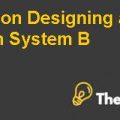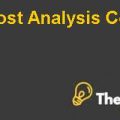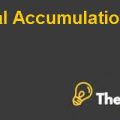HARVARD MANAGEMENT COMPANY
How does HMC develop its capital market assumptions?
Harvard Management Company deliberately follows the real returns and the investment opportunities in real returns. It is becauseof the real rate assumption in capital markets such as:
Risk free rateof return remains constant for all portfolios. Secondly, therewould be either no or negligibletransaction costand the related taxes. Thirdly, an equal investment opportunity is to be provided for getting returns in real terms.In contrast, The nominal rate of return shows the inflated return over the real rate of return.
Why does HMC focus on real returns?
Real returns show the actual earning potential of company with respect to overall earning over investment. However, Real rate depicts no adjustments with the inflation in return.In addition, real rate does not incorporate the inflation that is associated with the investment horizon. And the nominal rate of return wholly accounts for the effect of inflation in assessing returns from investment. However real returns can be adjusted to nominal return by incorporating inflationary effectson it. Harvard Management Company (HMC) focuses on the real return to evaluate the actual return that is earning on its investment. Which is because of their diversified investment portfolios over various countries that have different inflation rates. As a result it becomes hard to nullify the effect of various rates that deals in inflation to get the evaluation of appropriate real returns. Harvard Management Company should therefore focus on real rates to assess the actual returns from investment.
What make HMC´s capital market assumptions imply about the U.S. equity premium and foreign equity premium?
Equity premium indicates the capital gain on investment over the price of equity that could be in the form of dividend, bonus or some other. The investorthus are anticipating returns against their investment in equity through Investing in local market or any of the stock market around national and internationally.The foreign equity premium is the return which the investor expects to getby investing in the foreign markets in the form of interest income or dividend income These terms are defined with respect to the case scenario.
Using the data from exhibit 17, discuss how you would obtain exhibit 18?
The analysis is done with the reflection of case exhibit 18 that the standard deviation of different assets is derived from the volatility of the assets. The main point occurs from the real expected rate of return which is extracted from the characteristics of the allocation of the high and normal yields. The market return shows the streams between the upper level and a low level. When you compare exhibit 17 that is showing the real asset returns without the expectation of probability which is shown in exhibit 18. Furthermore, standard deviation and expected return are calculatedrespectively by the formula as follows:
The above formula defines the two asset portfolio theory that determines the weight, assign to each asset class and the standard deviation of these assets generating the respected returns.Further, it shows the covariance between these two assets.
The expected rate of return is calculated through assigning the weight to return on each assets. Further expected rate of return is calculated using the same formula with the addition of the Real Rate of Returnwhich helps in calculation returns adjusted inflation.
Furthermore, in the exhibit 18 the Sharpe ratio is calculated from the analysis for the performance of risk adjustment and it can be calculated by dividing the difference of risk free rate and the rate of return and that difference is further divided by the standard deviation of that portfolio. The Harvard Sharpe ratio can be calculated.........................
This is just a sample partial case solution. Please place the order on the website to order your own originally done case solution.












